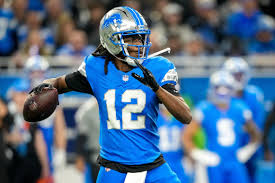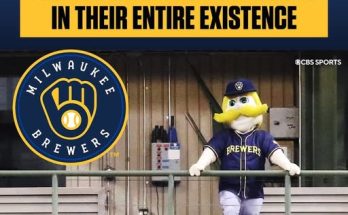Hal Mumme, the former Kentucky football coach, is making a return to the college sidelines.
Hal Mumme, the former Kentucky football coach whose name long ago became shorthand for fearless offensive imagination, is back on a college sideline, and the development feels like fishing a dusty, dog‑eared play card from the bottom of an old briefcase only to realize the ink is still wet with possibility. Football has churned through eras since he first splashed across television screens—spread proliferation, RPO revolutions, tempo wars, analytics dashboards—but the core Mumme conviction endures: if you teach aggressively simple concepts, demand ruthless spacing, and give the ball to quarterbacks who will cut it loose, you can punch above your recruiting weight and make Saturdays electric. His return is therefore more than a nostalgia hit; it is a reminder that creative courage ages far better than people think.
To appreciate why his reappearance matters, rewind to the formative period when Mumme and a then‑lesser‑known assistant named Mike Leach spent ridiculous hours reimagining how to stress coverage with breadth, tempo, and repetition. They scavenged ideas everywhere—BYU’s pass game legacy, high school spread tinkerers, run‑and‑shoot branches, whatever clinic tape they could borrow, swap, or outright beg for. The breakthrough was philosophical minimalism. Instead of burying players under encyclopedic verbiage, they trimmed the call sheet to a handful of families, repped those families at game speed, and empowered quarterbacks to read grass rather than memorize paragraphs. When your system prizes decision clarity over playbook volume, practice reps multiply faster than mistakes can calcify, and confidence compounds.
Kentucky provided the national showcase. The Wildcats did not suddenly transform into a blue‑blood roster; what changed was the geometry of the field. Wide splits yanked defenders out of traffic. Backs motioned and released, forcing linebackers to declare. Vertical stems stretched safeties past their comfort zones. Cornerbacks, denied the luxury of rolling downhill against predictable run fits, had to hold up in space snap after snap. Scoreboards flashed like pinball machines, and a fan base accustomed to modest expectation discovered the adrenaline rush of an offense that could erase deficits in minutes. Even when execution misfired, the attempt was intoxicating. Hope is the most renewable resource in college athletics, and nothing manufactures it faster than the ball in the air.
A coaching life, of course, rarely climbs in a straight line. Mumme’s career path zigged through headline highs, administrative friction, injuries, budget realities, compliance scrutiny, small‑school reinventions, even quirky advisory roles that barely resembled traditional jobs. Yet the through‑line held: stretch the field, simplify the read, trust the throw. That stubborn adherence to principle is easier admired in hindsight than it was to live in real time, because innovation usually arrives paired with resistance. Losing weeks invite I‑told‑you‑so grumbles. Personnel gaps get exposed. Weather wrecks timing. Still, Mumme kept chasing answers within his offensive grammar rather than retreating to comfort schemes that bludgeoned the clock and numbed the imagination.
What makes this latest homecoming fascinating is how thoroughly the wider sport has migrated toward the frontier he once patrolled almost alone. Seven‑on‑seven circuits have raised generations of quarterbacks and receivers fluent in quick game spacing. High school coaches stream clinic cut‑ups that would have been closely guarded decades ago. College staffs lean on data models that de‑stigmatize fourth‑down aggression and early‑down passing. Rules designed for player safety disproportionately favor spread looks that distribute collisions. Even defensive coaches now cut their teeth stopping the very concepts that once startled them. In that climate, a program hiring Mumme is not importing an oddity; it is re‑engaging a foundational dialect of the modern offensive language.
So what practical value can he deliver on Day 1? Start with quarterback culture. Mumme’s practice DNA features relentless decision reps: rapid sets, multiple balls, rotating looks, and an insistence that mistakes happen at full tempo so corrections embed kinesthetically, not just verbally. Young passers tend to accelerate under that load. Next comes receiver accountability. In the Air Raid lineage, stems are diagnostic tools, not decorative routes; leverage tells dictate choice, and spacing discipline is policed as tightly as turnover margin. When players learn why the grass matters, they self‑correct alignment before coaches bark. Layer in route conversions tied to coverage shells and you have a living offense that teaches players to think while playing fast—an elusive combination.
Protection forms the third critical leg. Because timing is the offense’s hidden run game, the ball is meant to leave quickly enough to mitigate mismatches in brute strength. That does not mean abandoning the run; it means pairing quick sets, angles, and screens with draws, traps, and counters that punish light boxes created by spread alignments. Mumme has long appreciated that a three‑yard pass on first down can function as an efficient perimeter run, and that showing the defense horizontal stress softens interior lanes later. Expect him to tailor the menu to the roster: if the line is athletic but light, lean on tempo and slide help; if it is experienced, mix in deeper drops and double‑moves that reward protection trust.
Yet defenses have evolved aggressively since the early Air Raid fireworks, and the chess match now tilts on disguise. Pattern‑match coverages blur run/pass keys. Simulated pressures threaten protection rules without sacrificing coverage depth. Boundary/field specialization and creeper looks bait quarterbacks into false pre‑snap assumptions. A returning Mumme will need counter‑punches: unbalanced or asymmetrical splits that corrupt defensive strength calls, late motion packages that force re‑checks, tempo shifts that trap personnel, and formation tags that flood one side of the field faster than rotations can chase. He has always been willing to steal a good idea; expect the playbook to be as ruthlessly larcenous as ever.
Recruiting and retention angles may be the most immediate off‑field dividends. Portal‑era players chase systems that showcase them. Quarterbacks want volume numbers and freedom to audible. Wideouts want target share. Backs increasingly value route inventory that boosts their draft profile. Offensive linemen selling pass‑pro chops appreciate systems that teach sets against varied spacing rather than anchoring exclusively in tight formations. Being able to say “you will catch, you will throw, you will learn to see coverage” is currency. Clip reels from Mumme‑influenced offenses across the sport become sales collateral; recruits can visualize themselves inside that tape far more easily than inside a generic pro‑style script.
Culture, though, is where schemes either bloom or crumble. One of Mumme’s enduring reputational traits is the way he grants players permission to have fun without confusing joy for looseness in detail. Practices under his influence have been described as high‑rep, high‑correction, low‑panic environments: mess it up, get coached, rip it again. That rhythm de‑weaponizes fear of mistakes, which is crucial for an offense predicated on anticipation throws. In an era when college athletes juggle academics, NIL negotiations, social media scrutiny, and transfer temptations, a program that feels light enough to invite experimentation yet disciplined enough to reward mastery can be magnetic.
Fans feel offensive identity in their bones. Hope in stadiums has a sound—the collective inhale when a quarterback hits the back foot of his drop and scans deep; the sonic whiplash when a three‑score deficit becomes a one‑possession game in two minutes; the buzzing conversation that spills into Monday because nobody left early. Communities rally around entertainment, and high‑octane football is civic theatre. Concession sales climb when student sections stay. Donor enthusiasm spikes when televised games become must‑watch events. Even local youth leagues adapt; kids mimic what they see on Saturdays. Style is not fluff; it is an accelerant for engagement up and down the program ladder.
None of this magic immunizes a team from hazard. Aggressive offenses increase variance. Incompletions stop clocks and expose defenses. A thin offensive line can unravel timing. Quarterback injuries can derail seasons built on rhythm. Bad weather compresses spacing. Opponents with deep secondaries can spin coverages late and bait impatient throws. Skeptics will seize on every turnover barrage as proof that balance—or even regression to ground‑heavy ball control—is the only responsible path. The counterpoint, one Mumme has implicitly argued for decades, is that calculated risk is often the underdog’s clearest road to collapsing talent gaps. Data now backs what his gut long suspected: possessions matter, explosive plays swing win probability, and playing not to lose rarely topples favorites.
Perhaps the deepest appeal of his comeback lies in what it signals about the sport’s ongoing laboratory spirit. College football, for all its television money and bureaucratic sprawl, remains a sandbox where bold ideas occasionally jump the fence and change the mainstream. A motion tweak in September can seed a bowl‑game upset in December. A practice structure that doubles decision reps can rescue a redshirt freshman and, by extension, a season. A conversation over cold pizza in the staff room can birth a concept that travels the coaching tree for decades. Mumme’s presence on a sideline guarantees curiosity will be part of the weekly install.
So yes, stripped to the crawl line, the news reads simply: Hal Mumme, former Kentucky head coach and long‑time passing‑game provocateur, is back in college football. But folded inside that plain sentence is a legacy of disruption, teaching, and stubborn belief that the game is more elastic than tradition insists. Wherever he is working now, every snap will carry echoes of film‑room midnights when he and a cadre of insomniac schemers reimagined what was possible. The rest of us get to watch the sequel—and maybe, if we are lucky, witness the next wrinkle that future coaches will someday call foundational.



